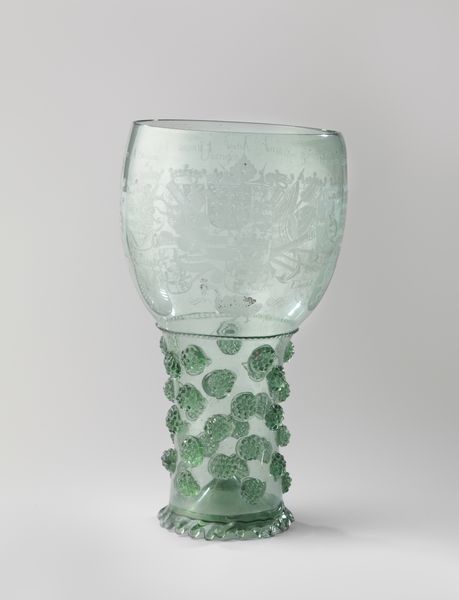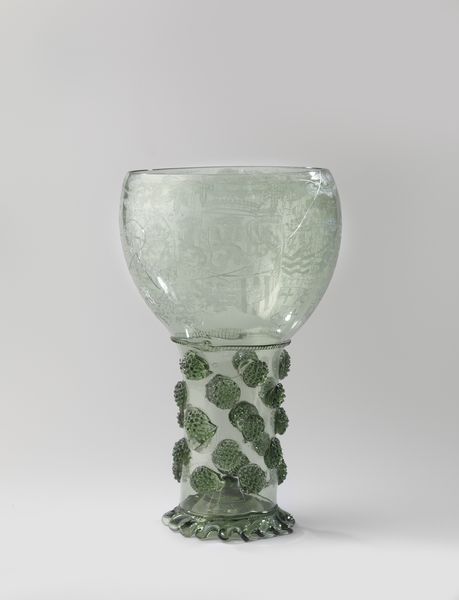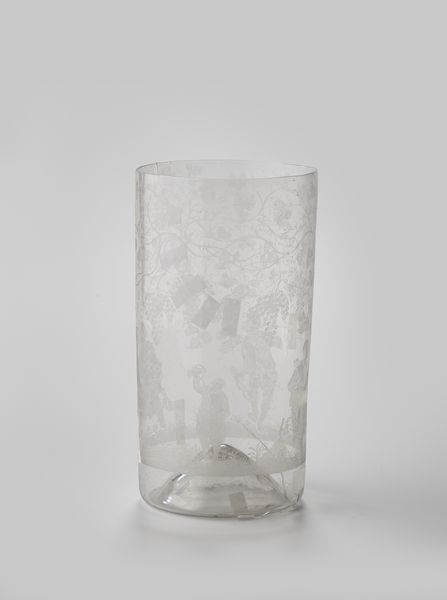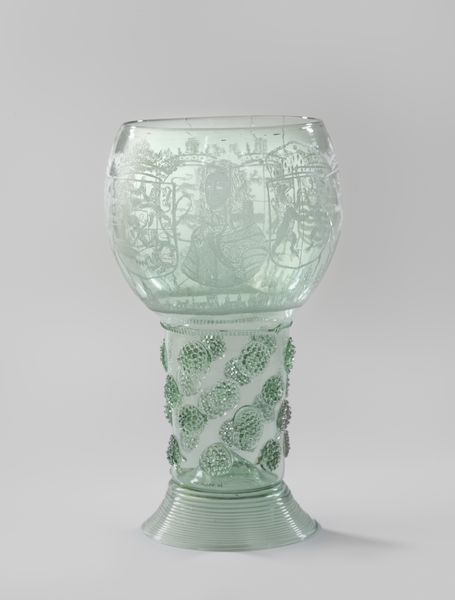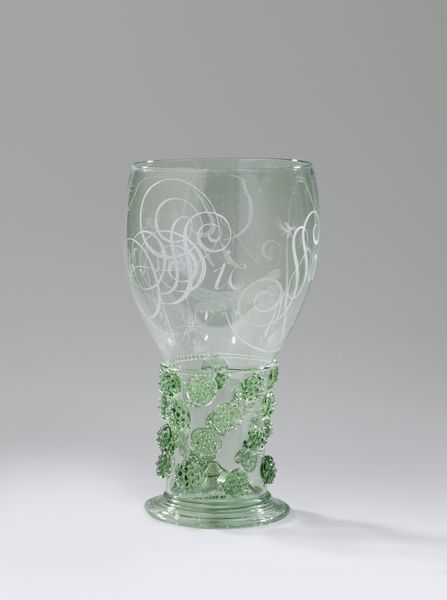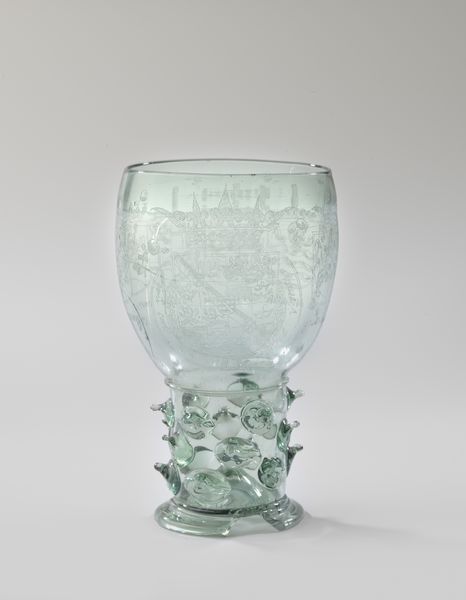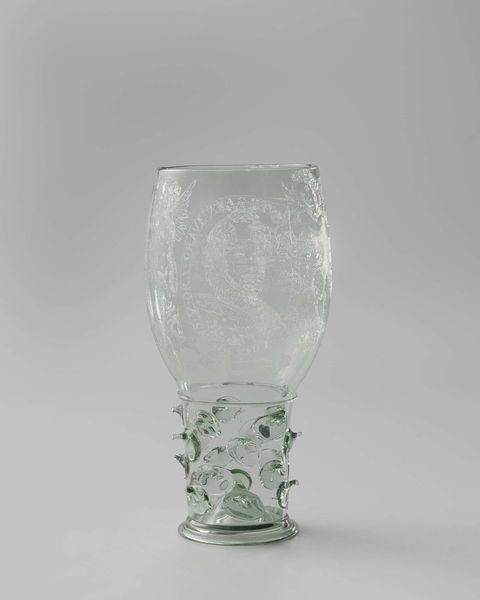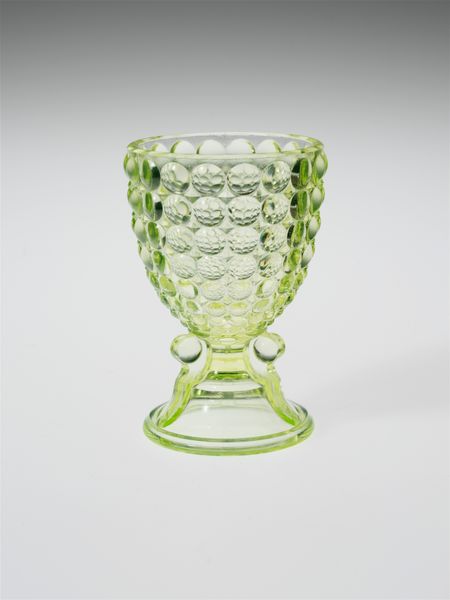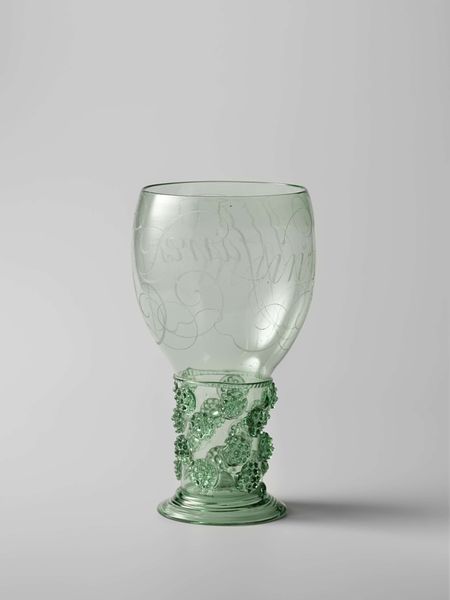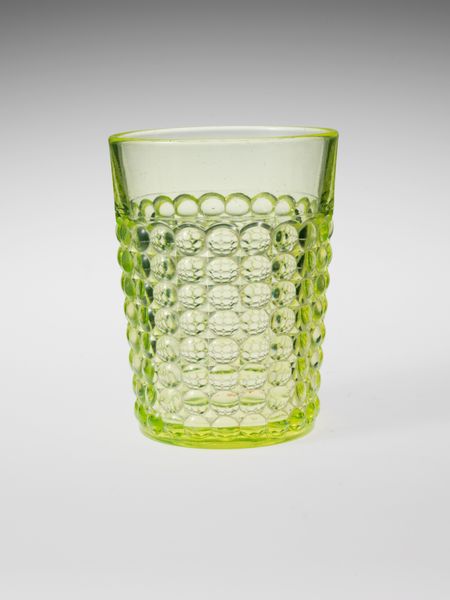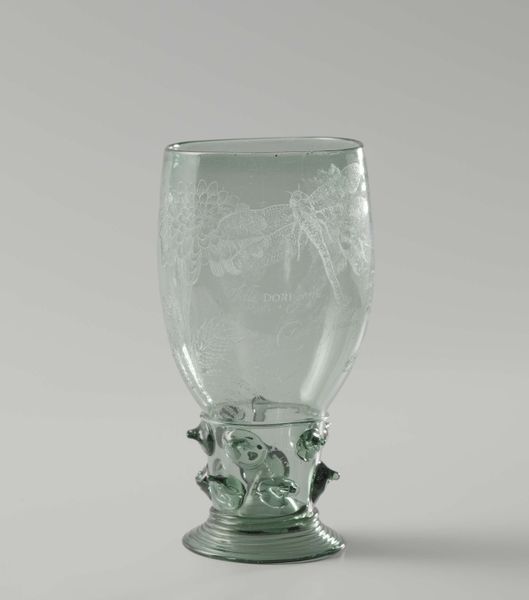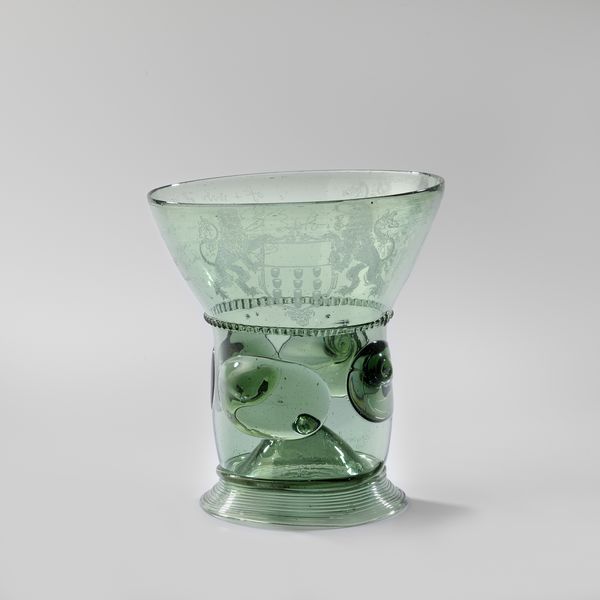
ceramic, glass
#
baroque
#
ceramic
#
glass
#
ceramic
Dimensions: height 31.1 cm, diameter 18 cm
Copyright: Rijks Museum: Open Domain
Curator: At first glance, the cool, pale green and the intricate surface detailing of this Roemer give it a subdued, almost spectral presence. What strikes you initially? Editor: Its fragility is evident, and it begs the question: what stories do the artisans who painstakingly constructed this object hold? Curator: Quite right. Dating back to 1671, this "Roemer with the coat of arms and a portrait of Michiel Adriaensz. de Ruyter" uses both ceramic and glass elements to build out this object. Let’s begin by appreciating how form contributes to the object’s symbolism. Note the bowl’s silhouette against the cylindrical base adorned with prunts—each choice affecting the other. Editor: I am drawn to the prunts; their application looks both practical, aiding grip, and decorative, offering tactile and visual contrast. Who crafted these, and what was their status? Were they specialists, or was this merely one step in a larger system? Curator: I agree that the prunts do play a double part, aiding grip as well as acting like jeweled decorations. Also, it may please you to know that it has been argued these types of objects are believed to originate in Germany and traveled as raw materials. They would travel across Europe and locally crafted and individualized in places such as The Netherlands. Now, focusing on the upper register and its engraved surface decoration— observe how light interacts with the imagery cut into the glass. How does the rendering of De Ruyter, specifically, shape your reading? Editor: Knowing about this distribution system already gives a greater insight to these objects. It's all about networks and accessibility. The portraits and heraldic imagery clearly situate it in a specific societal and perhaps political sphere. Knowing more about where the glass came from informs who this Roemer would have belonged to. Curator: The interplay between its production and aesthetic is a powerful intersection. It seems both form and surface work as elements for expressing pride in one's nation or familial linage. With its textures and translucent material quality it seems quite a marvel that it could also reference socio-political systems so well. Editor: Absolutely, tracing this Roemer offers a more complex material and socio-historical understanding, far surpassing an art-historical account alone.
Comments
No comments
Be the first to comment and join the conversation on the ultimate creative platform.
